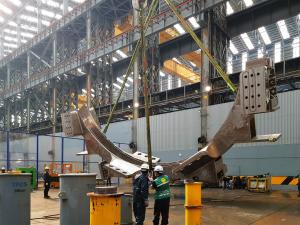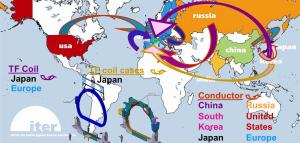Why did ITER opt for such a ponderous and taxing work organization? Because ITER is not just about building a tokamak — it is also a teaching project, one in which all participating countries and their industry are meant to acquire expertise in fusion science and tokamak technology.
This dimension, which is sometimes overlooked in the day-to-day hardships and frustrations of such a complex, world-spanning project, remains at the core of the ITER DNA.
The toroidal field coil production process is an example—indeed the most extreme—of the constraints that ITER has imposed upon itself: conductor coils were manufactured in half a dozen countries; cases are under Japan's responsibility but partly subcontracted to Korean industry, and the cold testing and insertion operations have been entrusted to yet other companies—one in Europe and two in Japan...
This mind-boggling complexity, which no reasonable industrial venture would dare accept, is the price to pay for the ITER miracle — in the long-term project to provide future generations with a safe and inexhaustible energy source, the participating nations need both the training and the short-term technological and industrial benefits.
This is how project's Founding Fathers, more than three decades ago, intended it: accept and learn from the difficulties of building ITER today in order to acquire the capacity, tomorrow, to make fusion energy available to all.
1- The procurement of the 18 toroidal field coils (plus one space) needed for the ITER tokamak is shared between Europe and Japan.



